How to Make Pici Pasta
Learn how to make pici pasta from scratch! It’s one of the easiest and most beginner-friendly pasta shapes. No special pasta equipment needed. Pici pasta originates from Tuscany. It’s a long, hand-rolled pasta type, similar in shape to spaghetti but thicker and more rustic. With just a few basic ingredients and a little bit of time, you can easily create this delicious and chewy pasta shape at home. The key to making great pici is to use the right flour, knead the dough well, and roll it out to the perfect thickness. Try this pici carbonara recipe for a rich, creamy and decadent meal. Pici pasta is often also served with a simple tomato sauce or hearty meat sauces.
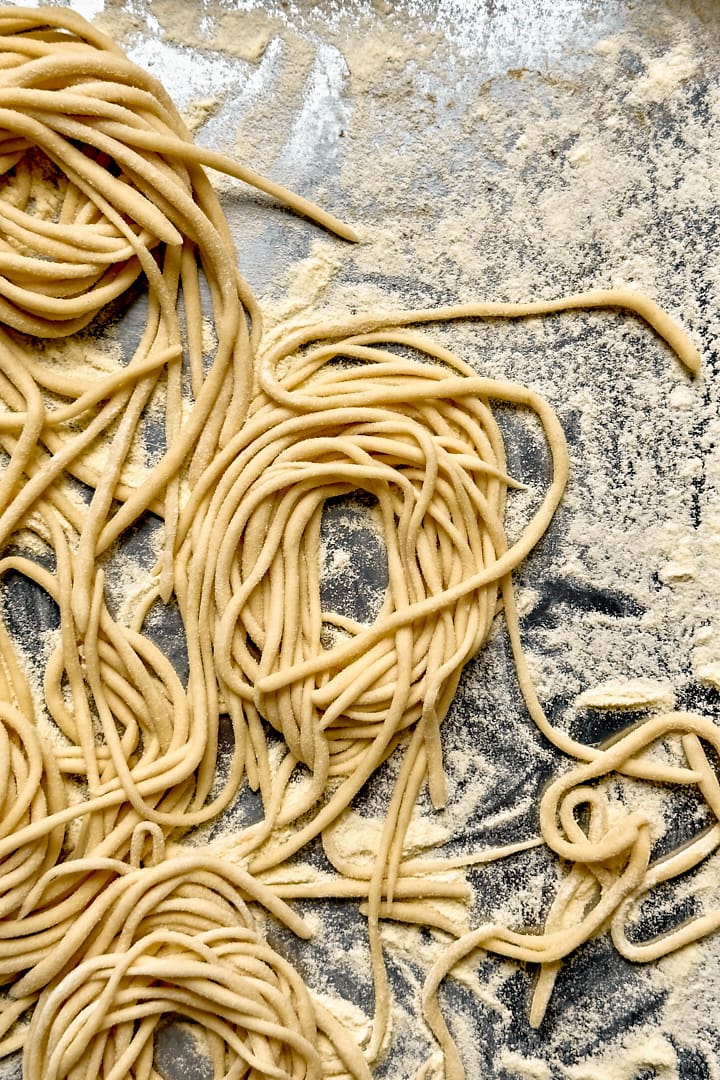
Ingredients and Tools You’ll Need
Step-by-Step Instructions
Step 1
Make the dough: Pile the flour on your work surface and create a well in the center. Pour the water and oil into the well. Using a fork, start to mix the water and flour in the middle and start to incorporate more and more flour from the edges until a thick batter forms in the center. Then, use a bench scraper to fold in the remaining flour. Knead the dough for about 10 minutes until smooth and firm. Cover it tightly with plastic wrap and let it rest at room temperature for at least 30 minutes, or preferably for a couple of hours.
Step 2
Shape the pici pasta:
Note: It’s important to not use any flour on your work surface at this point. The dough needs enough grip. The flour will interfere with the shaping process and makes it impossible to roll out the dough.
Cut off a quarter of the dough and keep the rest well wrapped. Using a rolling pin, roll the dough out to an even thickness (about 5 mm) and cut it into thin strips. Then, one at a time, roll each strip into a thin, spaghetti-like strand. With your palms flat on your work surface, start in the center and work your way outwards. If you feel at any point that the dough starts to dry out or crack, you can lightly brush it with a thin coat of olive oil. This makes it soft and smooth again. Try to roll the strands out as thin and evenly as possible (about 3 mm thick) but don’t worry if it’s not perfect. Pici are supposed to look rustic and handmade.
Step 3
Store the pici strands flat on a floured baking tray. Repeat the process with the remaining dough.
Dust the pasta with semolina flour and let it air dry for about 20 – 30 minutes to prevent sticking. Then, you can shape little pasta nests and freeze the pasta for later use, or cook it right away.
Step 4
Bring a large pot of water to a rolling boil and add a generous amount of salt. Once boiling, drop the pici into the water and cook for about 2 – 3 minutes, until al dente. Keep in mind that fresh pasta cooks quickly, so make sure to check for doneness frequently. Drain the pasta and toss it with your favorite sauce.
Tips & Tricks
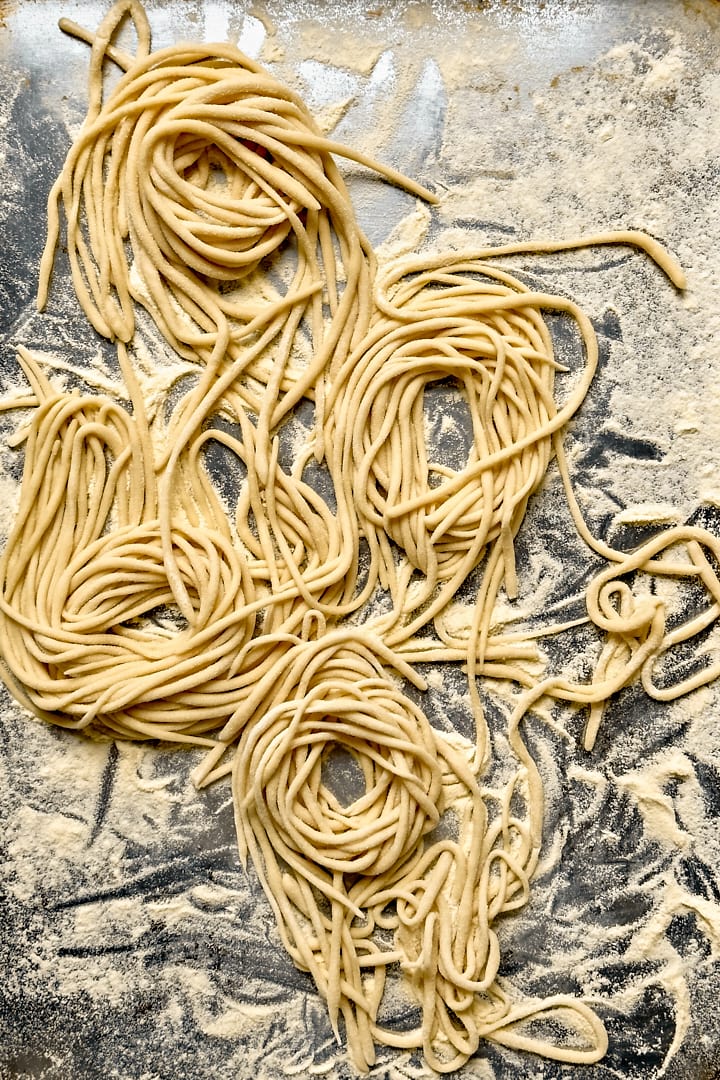
More Pasta Recipes You May Like:
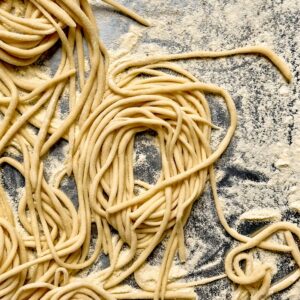
How to Make Pici Pasta
Equipment
- bench scraper
- Rolling Pin
Ingredients
- 160 g flour – Tipo 00
- 40 g semolina flour – optional, finely milled semolina flour for a bit more texture and bite. Alternatively you can use Tipo 00 instead.
- 100 g water – lukewarm
- 10 g olive oil
Instructions
- Make the dough: Pile the flour on your work surface and create a well in the center. Pour the water and oil into the well. Using a fork, start to mix the water and flour in the middle and start to incorporate more and more flour from the edges until a thick batter forms in the center. Then, use a bench scraper to fold in the remaining flour. Knead the dough for about 10 minutes until smooth and firm. Cover it tightly with plastic wrap and let it rest at room temperature for at least 30 minutes or preferably for a couple of hours.
- Shape the pici pasta: It’s important to not use any flour on your work surface at this point. The dough needs enough grip. The flour will interfere with the shaping process and makes it impossible to roll out the dough.Cut off a quarter of the dough and keep the rest well wrapped. Using a rolling pin, roll the dough out to an even thickness (about 5 mm) and cut it into thin strips. Then, one at a time, roll each strip into a thin, spaghetti-like strand. With your palms flat on your work surface, start in the center and work your way outwards. If you feel at any point, that the dough starts to dry out or crack, you can lightly brush it with a thin coat of olive oil. This makes it soft and smooth again. Try to roll the strands out as thin and evenly as possible (about 3 mm thick) but don’t worry if it’s not perfect. Pici are supposed to look rustic and handmade.
- Store the pasta: Lay the pici strands flat on a floured baking tray. Repeat the process with the remaining dough. Dust the pasta with semolina flour and let it air dry for about 20 – 30 minutes to prevent sticking. Then, you can shape it into little pasta nests and freeze it for later use or cook it right away.
- Cook the pasta: Bring a large pot of water to a rolling boil and add a generous amount of salt. Once boiling, drop the pici into the water and cook for about 2 – 3 minutes, until al dente. Keep in mind that fresh pasta cooks quickly, so make sure to check for doneness frequently. Drain the pasta and toss it with your favorite sauce.
Video
@notjustfood_blog Pici are thick, hand-rolled spaghetti and super easy to make! 🍝 All you need is flour, water, olive oil and your hands. No fancy equipment needed ✨ #picipasta #freshpasta #pasta #fyp #pastamakers
♬ This Magic Moment – Drifters
Notes
- Knead the dough well and let it rest for at least 30 minutes or preferably for a couple of hours. During the bench rest, the gluten can relax which makes the dough softer and easier to work with. If you don’t let the dough rest long enough it will resist rolling and spring back.
- Do not flour your work surface when you roll out the dough. The dough needs enough grip to be rolled out properly. If you use flour, the pasta will just slide across your countertop, making it impossible to roll it out.
- The pasta will swell in size and become a little bit thicker when you cook it. Take this into consideration, and try to roll the dough out as thin as possible.
- To store homemade pici for later use, you can freeze them on a tray for about 20 minutes until solid, and then transfer them to a freezer bag to save space. You can cook the pasta directly from frozen.

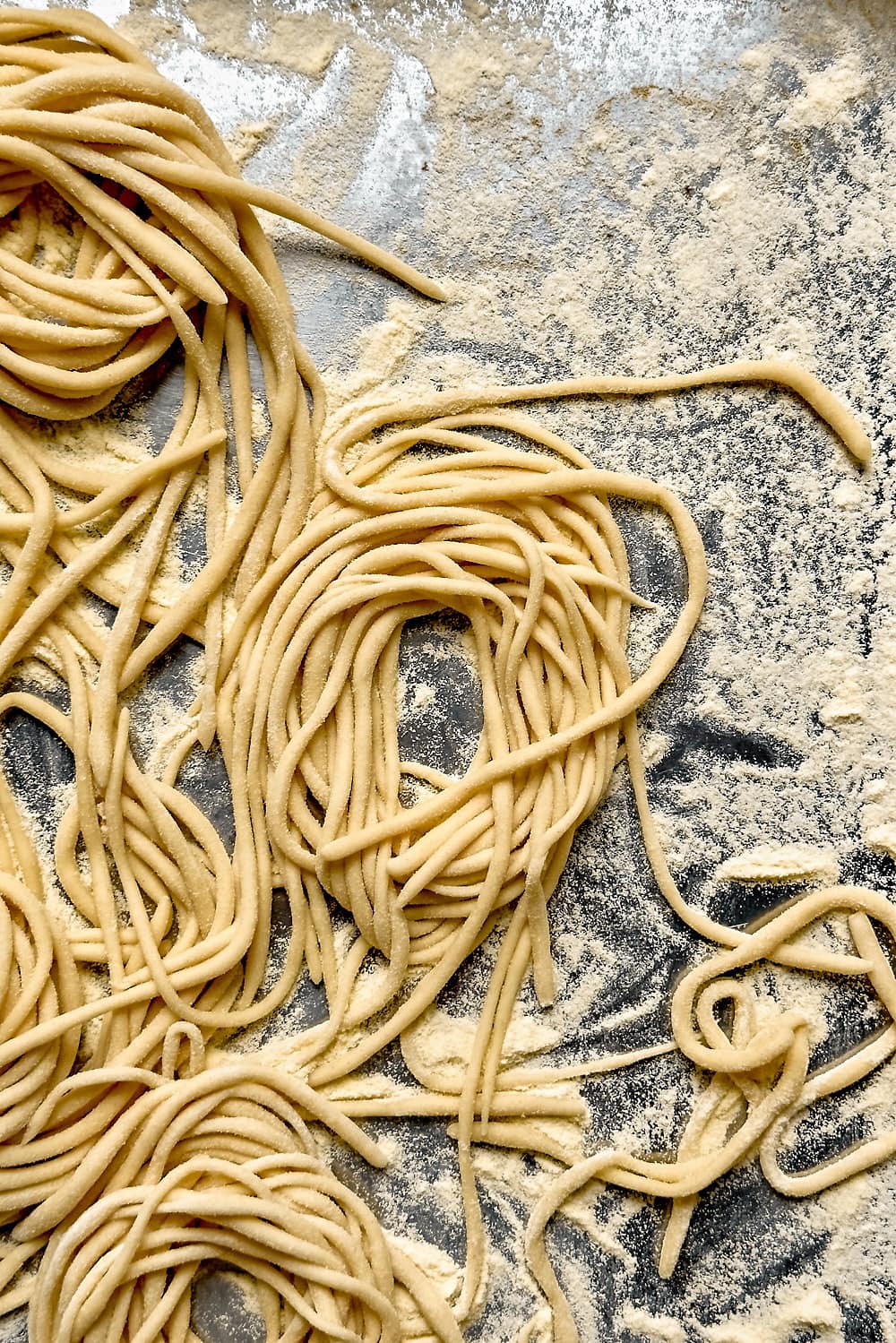
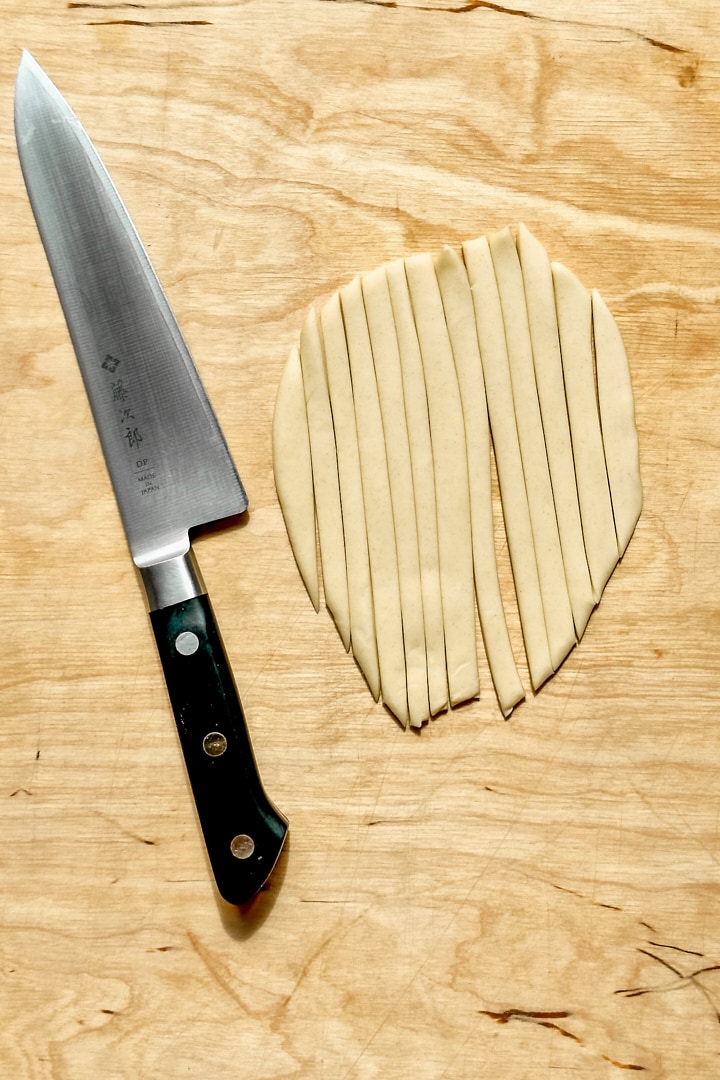

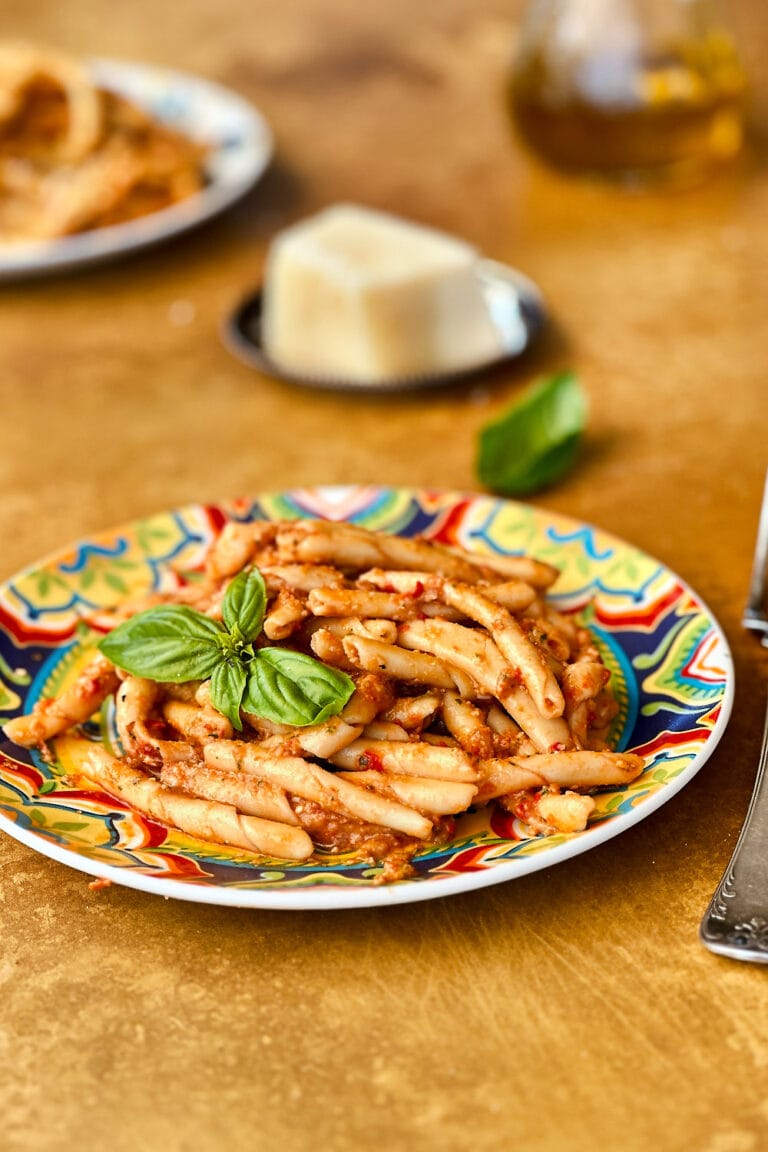
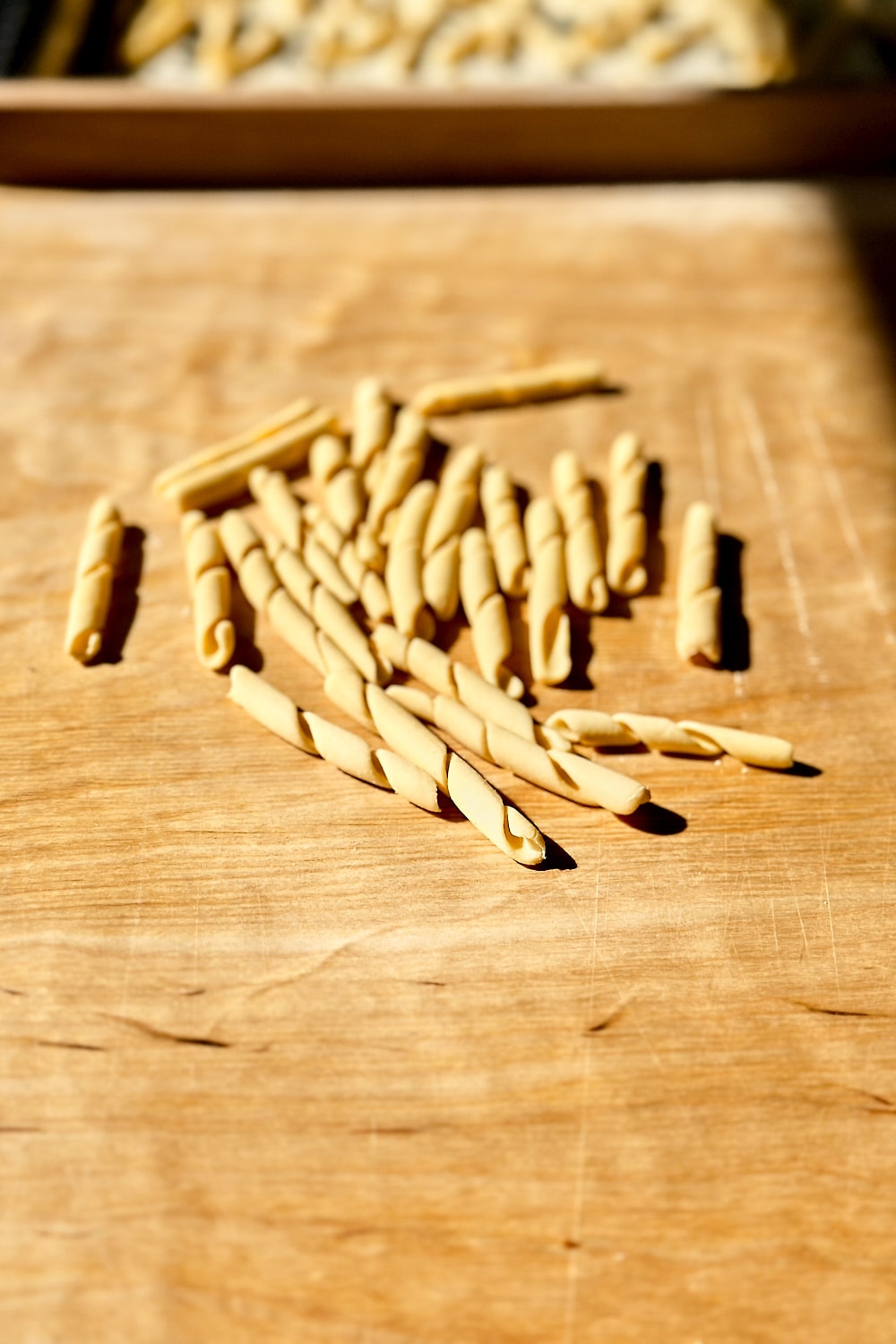
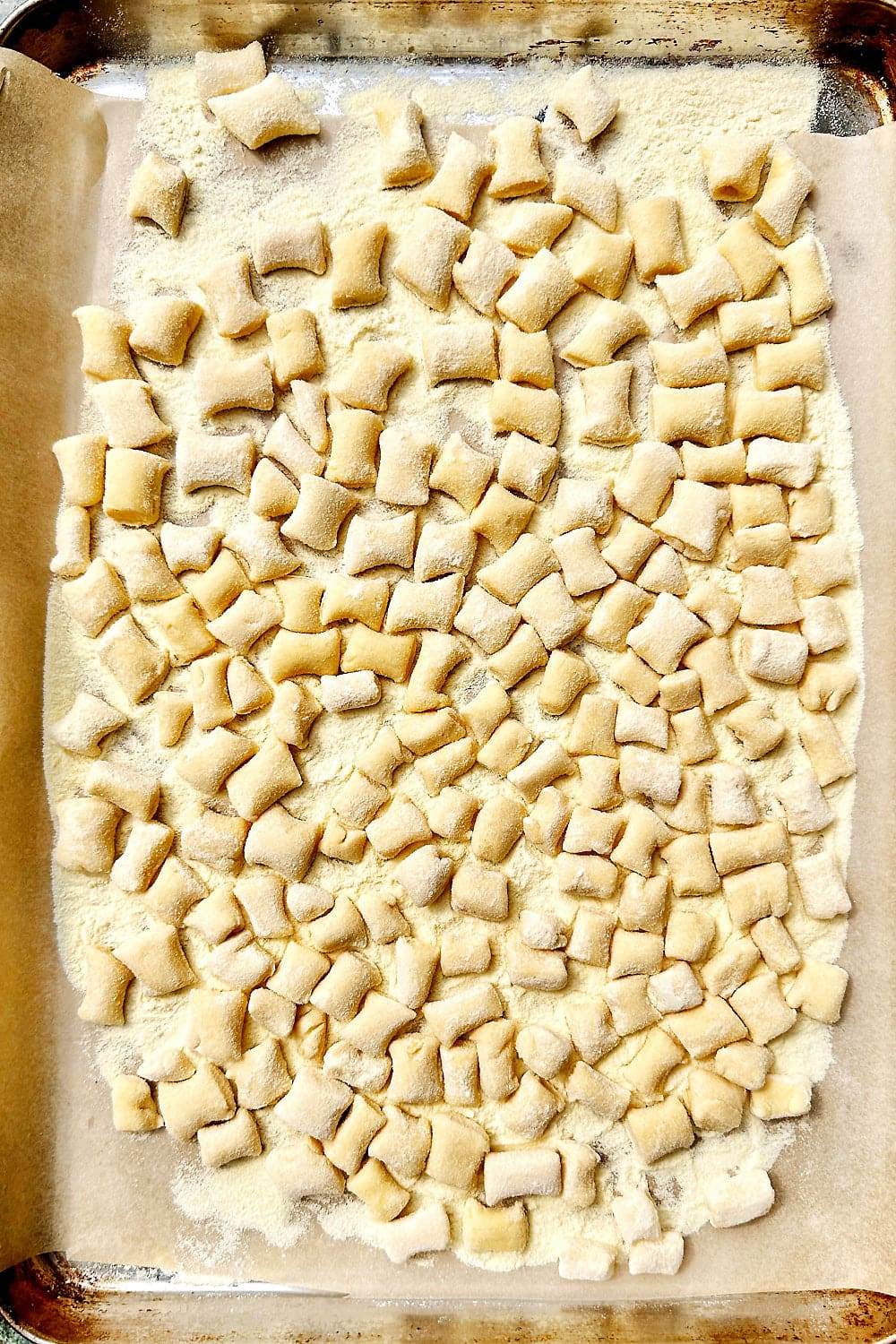
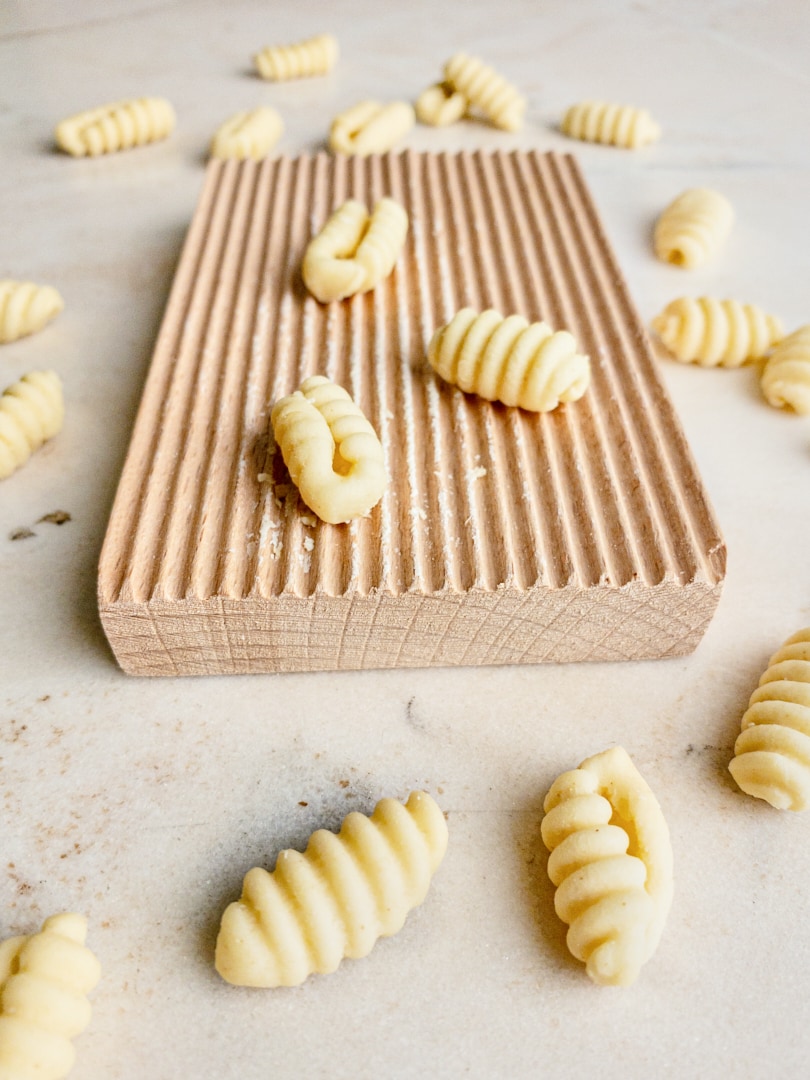
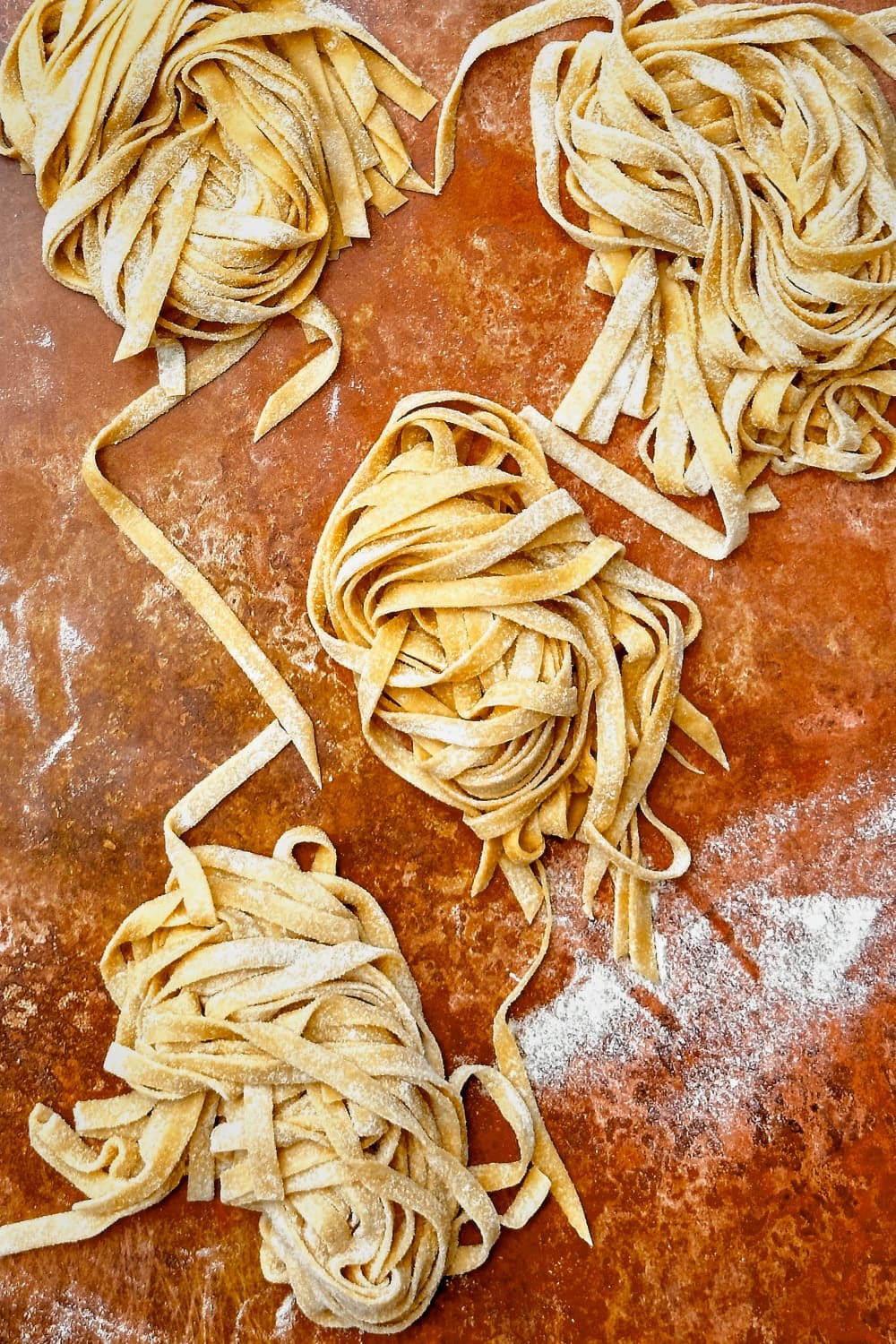
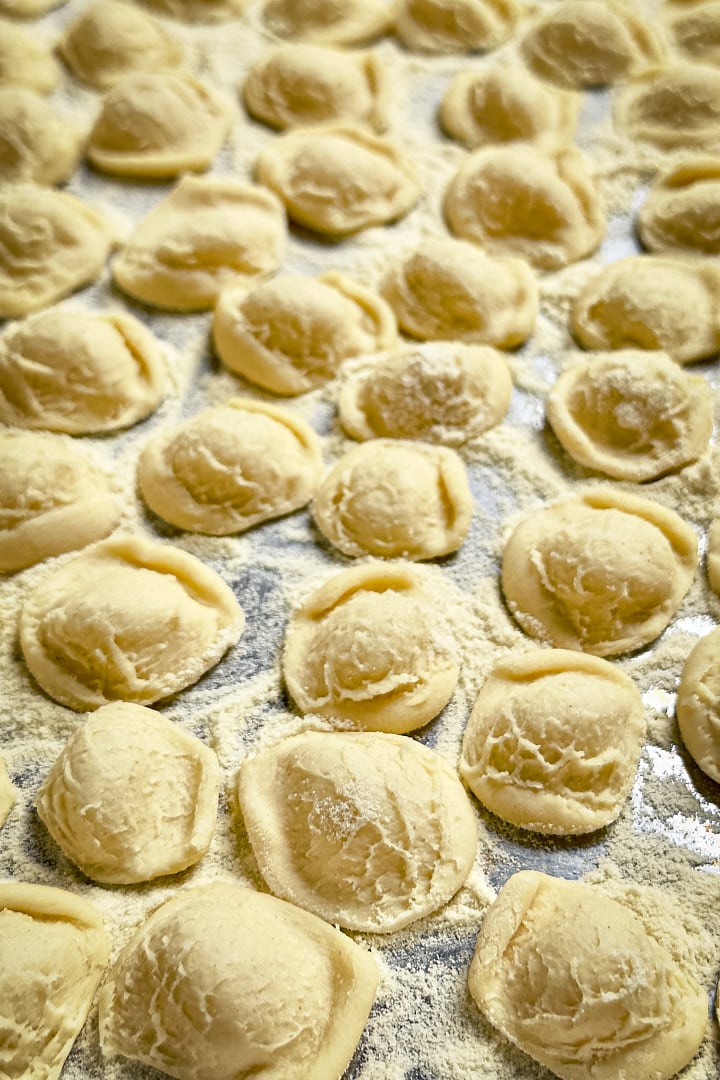
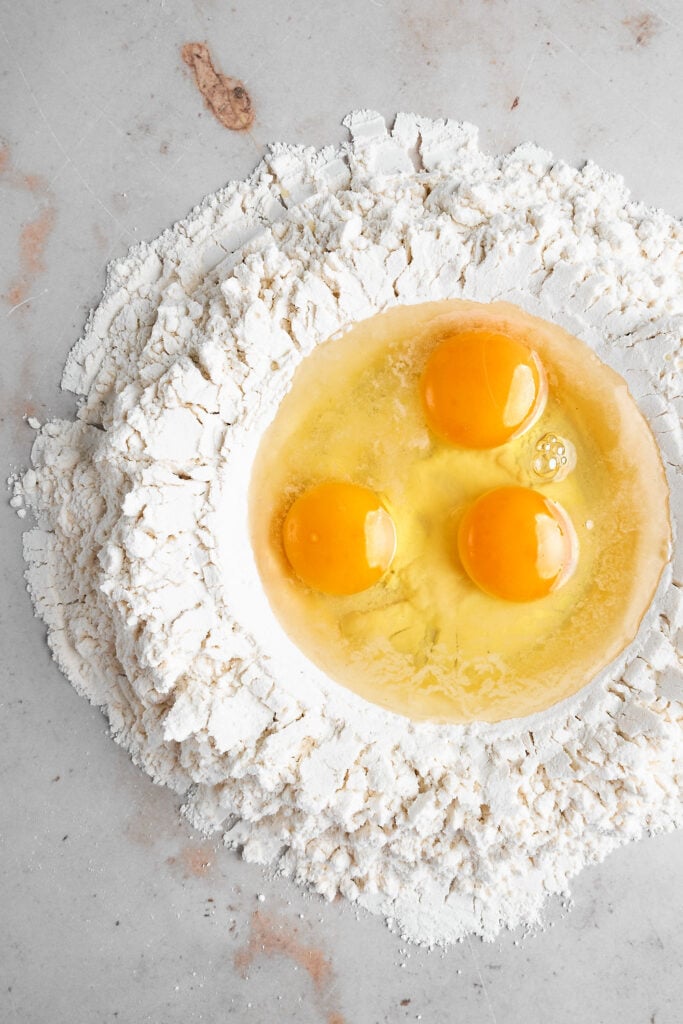
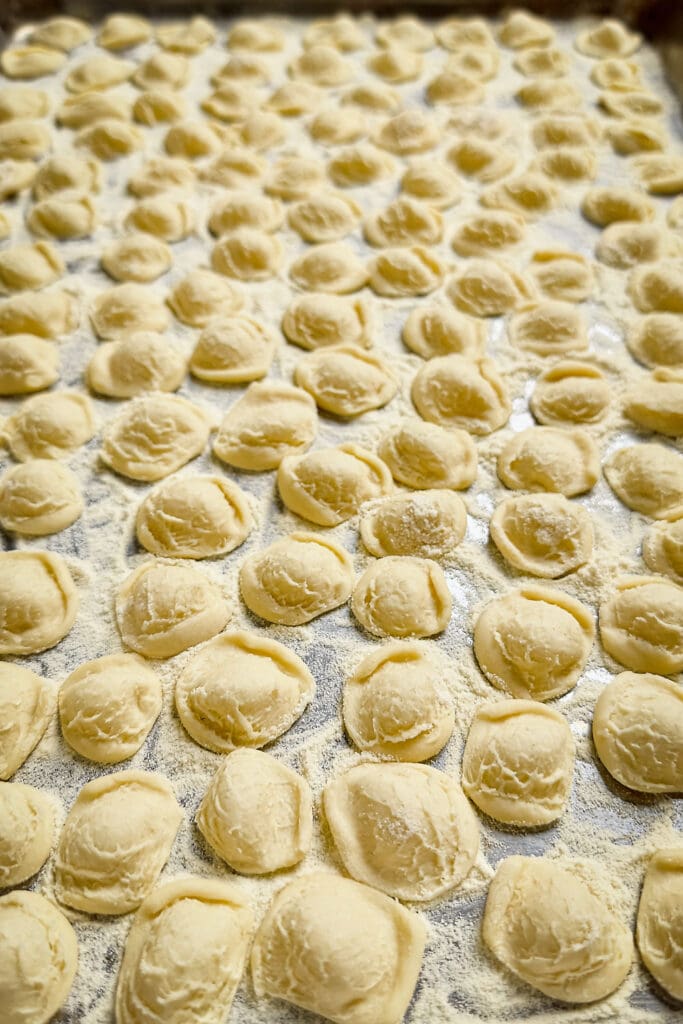
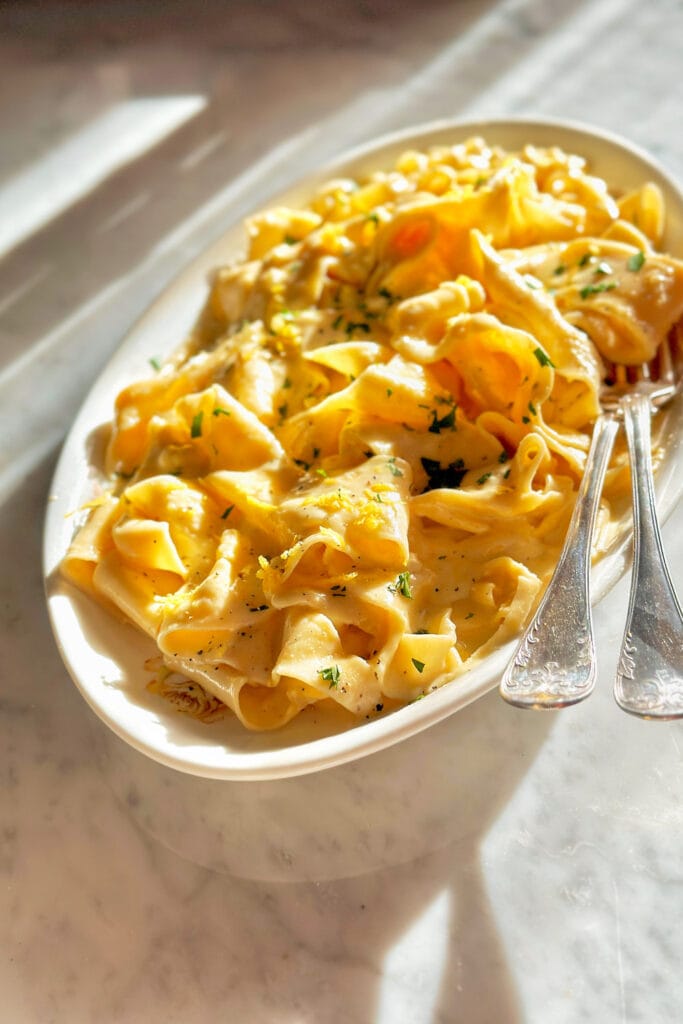
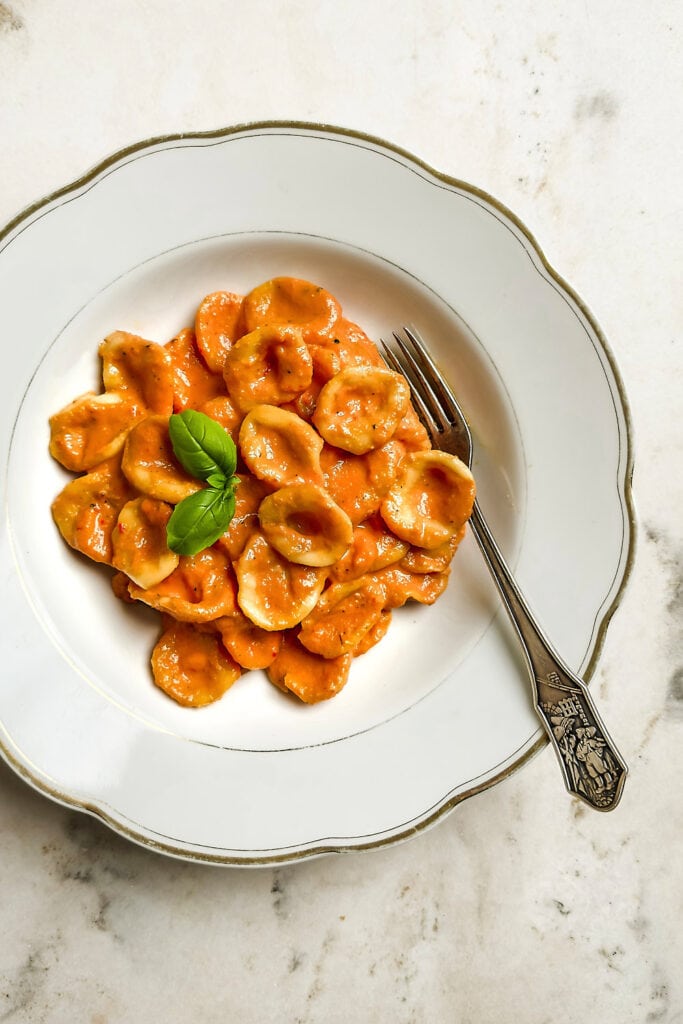
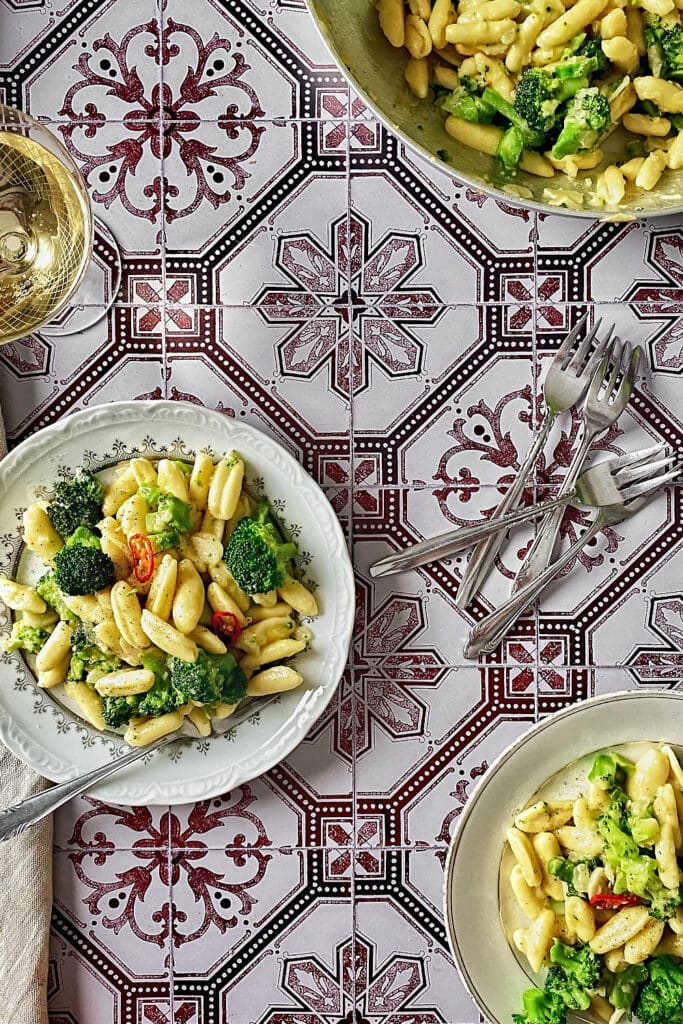
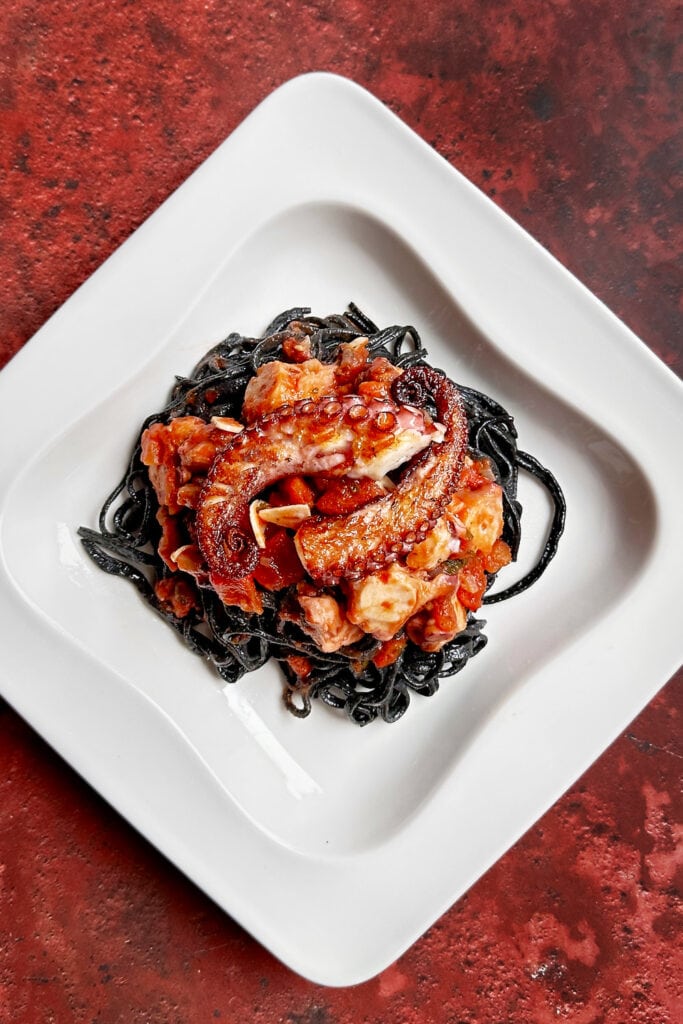
Hallo, wie viel lauwarmes Wasser benötigt man für die Pasta ca.? 😊
Hallo Sarah! Man benötigt ca. 90 – 100 g Wasser bzw. die Hälfte der Mehlmenge. 🙂